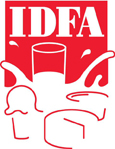 During IDFA's Tuesday morning session at Dairy Forum 2012, Rabobanks's Tim Hunt and Blimling and Associate's Phil Plourd discussed the topic of "Dairy Market Outlook" with nearly 800 conference attendees. Both predicted dairy could have great times ahead, but the road will not always be smooth.
During IDFA's Tuesday morning session at Dairy Forum 2012, Rabobanks's Tim Hunt and Blimling and Associate's Phil Plourd discussed the topic of "Dairy Market Outlook" with nearly 800 conference attendees. Both predicted dairy could have great times ahead, but the road will not always be smooth. "To date, the U.S. dairy market has been similar to the sixth man in basketball regarding dairy export markets," says Phil Plourd, president of Blimling and Associates, Inc. "We make significant contributions and even start from time to time. However, we still are not the main players," says Plourd. "The U.S. is growing its base. However, we need to get our heads around the fact that future export growth is not assured," says Plourd.
"There is indeed room for growth in the U.S. dairy export business," suggests Tim Hunt, global dairy strategist with Rabobank. "New Zealand, the world's largest dairy exporter, is slowing. Land prices continue to rise, and returns on raising sheep are heading up," says Hunt. "We don't believe New Zealand will have 5 percent growth in milk long-term. We can expect 2 to 3 percent growth to become the norm," says Hunt.
The developed dairy world can be a long-term supplier to other regions. High-production dairy areas have good climates and resources to produce milk. "Also, 18 of the world's largest 20 dairy processing companies are found in the developed dairy world," says Hunt.
Consumer demand should also continue to grow.
"Global dairy consumption should grow 2.4 percent on an annual rate," says Rabobank's Hunt. "We expect that growth to be unbalanced. Overwhelmingly, emerging market countries will be the larger share of dairy growth," says Hunt.
Plourd agrees. "What is the future of pizza sales in the U.S.?" asks Plourd. The average American already eats about 48 slices of pizza each year. In addition, there is an estimated 60,000 pizza stores in the U.S.









